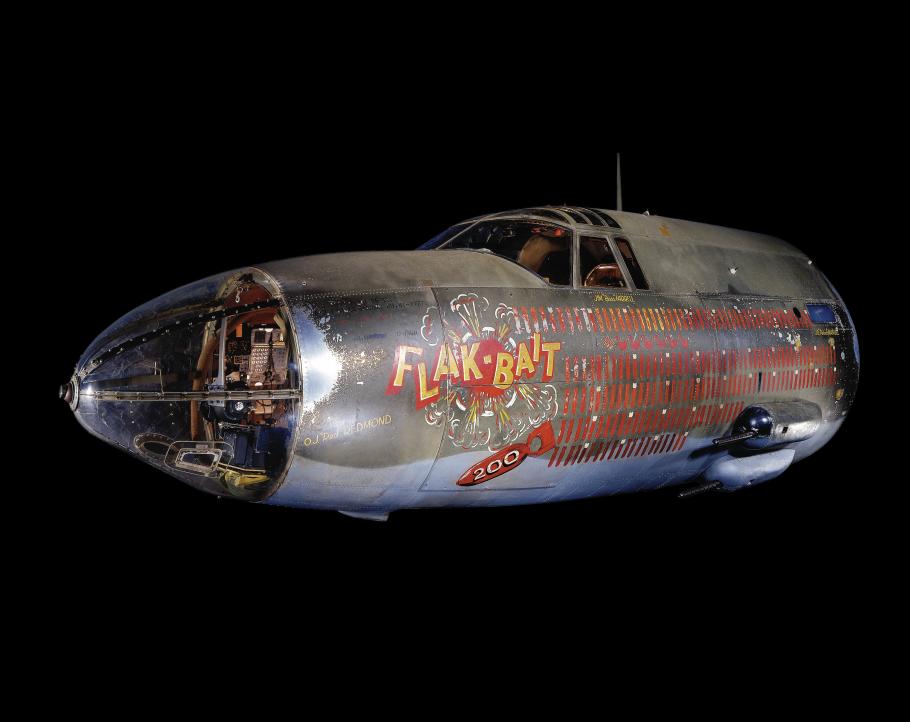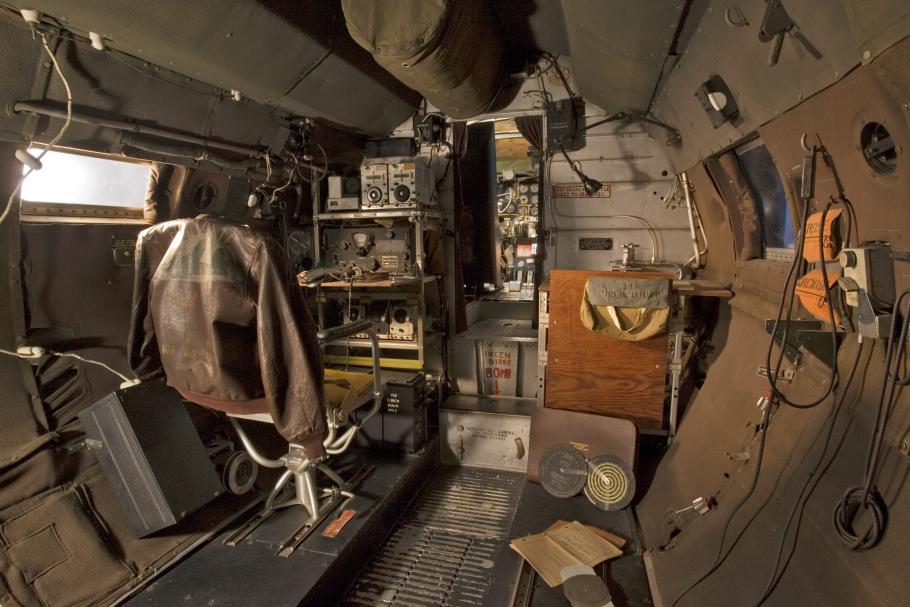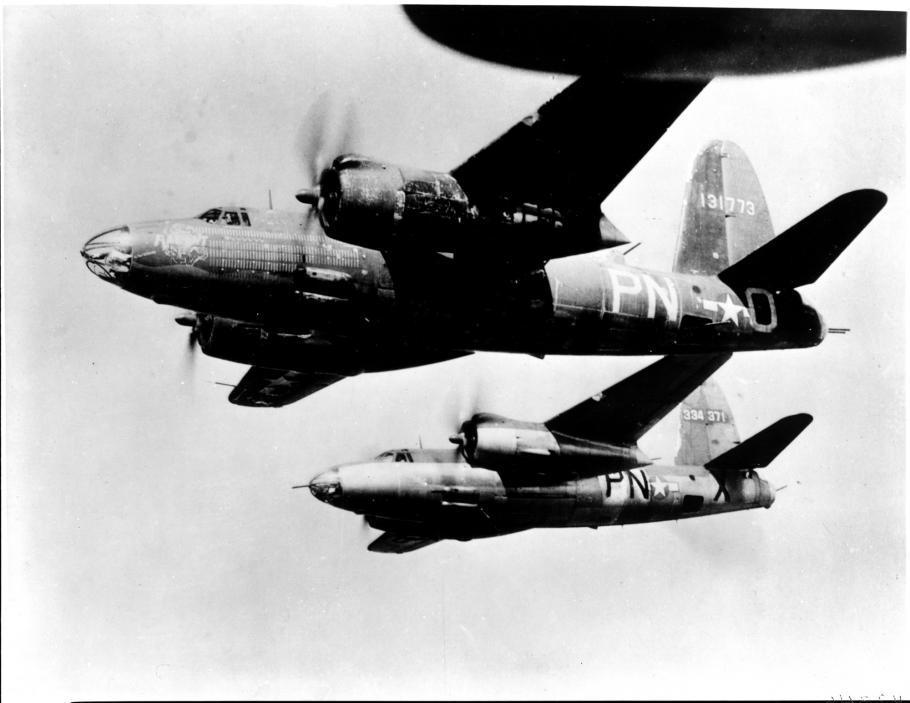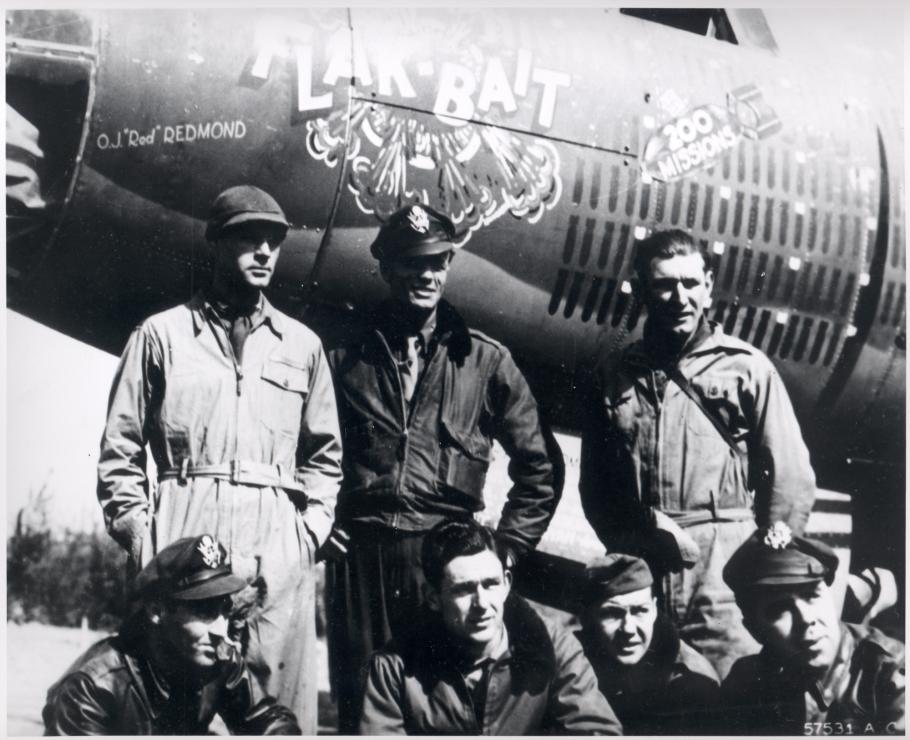The Museum’s Martin B-26B-25-MA Marauder Flak-Bait and its crews survived 207 operational missions over Europe, more than any other American aircraft during World War II. Recognizing that significance, the U.S. Army Air Forces saved it from destruction after the war. The newly-created U.S. Air Force transferred it to the Smithsonian in 1949 and the B-26 joined the collection in 1960. Flak-Bait’s forward fuselage section went on display in Gallery 205-World War II Aviation when the Museum opened in July 1976. Museum specialists have transported it, along with the rest of the artifact that has been in storage at the Paul E. Garber Facility, to the Steven F. Udvar-Hazy Center.
The front fuselage of Flak-Bait as it was on display inside the National Air and Space Museum World War II Aviation exhbition. Flak-Bait served with the 449th Bombardment Squadron, 322nd Bombardment Group, Eighth and Ninth Air Forces. This famous B-26 flew from bases in England and, after D-Day (on which it flew two missions), from bases in France and Belgium.
This is the view of the radio (left) and navigator positions inside Flak-Bait’s forward fuselage section as you look toward the cockpit.
Martin factory workers completed the B-26 in April 1943 and the Army Air Forces assigned it to the 449th Bombardment Squadron of the 322nd Bombardment Group. Lt. James J. Farrell gave the bomber its name by combining the word for German anti-aircraft artillery, “flak,” with his brother’s nickname for their family dog, “Flea Bait.” Between August 1943 and the end of the war, Flak-Bait and its crews accumulated 725 hours of combat time against Nazi Germany. Over the entire artifact, there are over 1,000 patched flak holes earned in missions that included sorties in support of Allied operations during the D-Day Invasion and the Battle of the Bulge.
On April 17, 1945, Flak-Bait lead the entire 322nd Bombardment Group on a mission to bomb Magdeburg, Germany. This was its 200th mission.
Flak-Bait’s crew poses with the bomber after the April 17, 1945 200th mission. The celebratory 200 Missions “bomb” just under the pilot’s cockpit is not the one found on the artifact today. This one was either superimposed on the aircraft or the photograph.
Few Marauders survive today out of the 5,266 produced by Martin. The National Museum of the U.S. Air Force, the Musée de l'Air et de l’Espace, and a private collector in Florida retain complete Marauders in their collections. There are three others undergoing rebuilding and restoration at museums in the United States. Flak-Bait’s history, provenance, rarity, and original condition make it an extraordinary World War II artifact. The Mary Baker Engen Restoration Hangar, Emil Buehler Conservation Laboratory, and the vast space of the Boeing Aviation Hangar of the Steven F. Udvar-Hazy Center make it possible to treat Flak-Bait and put it on display as a complete airplane. The overall treatment theme is to preserve the artifact’s structural, mechanical, and cosmetic features, but the project will require a combination of techniques ranging from conservation to, when warranted, restoration. The project’s completion will mark the first time Flak-Bait will be fully assembled since the end of World War II.



